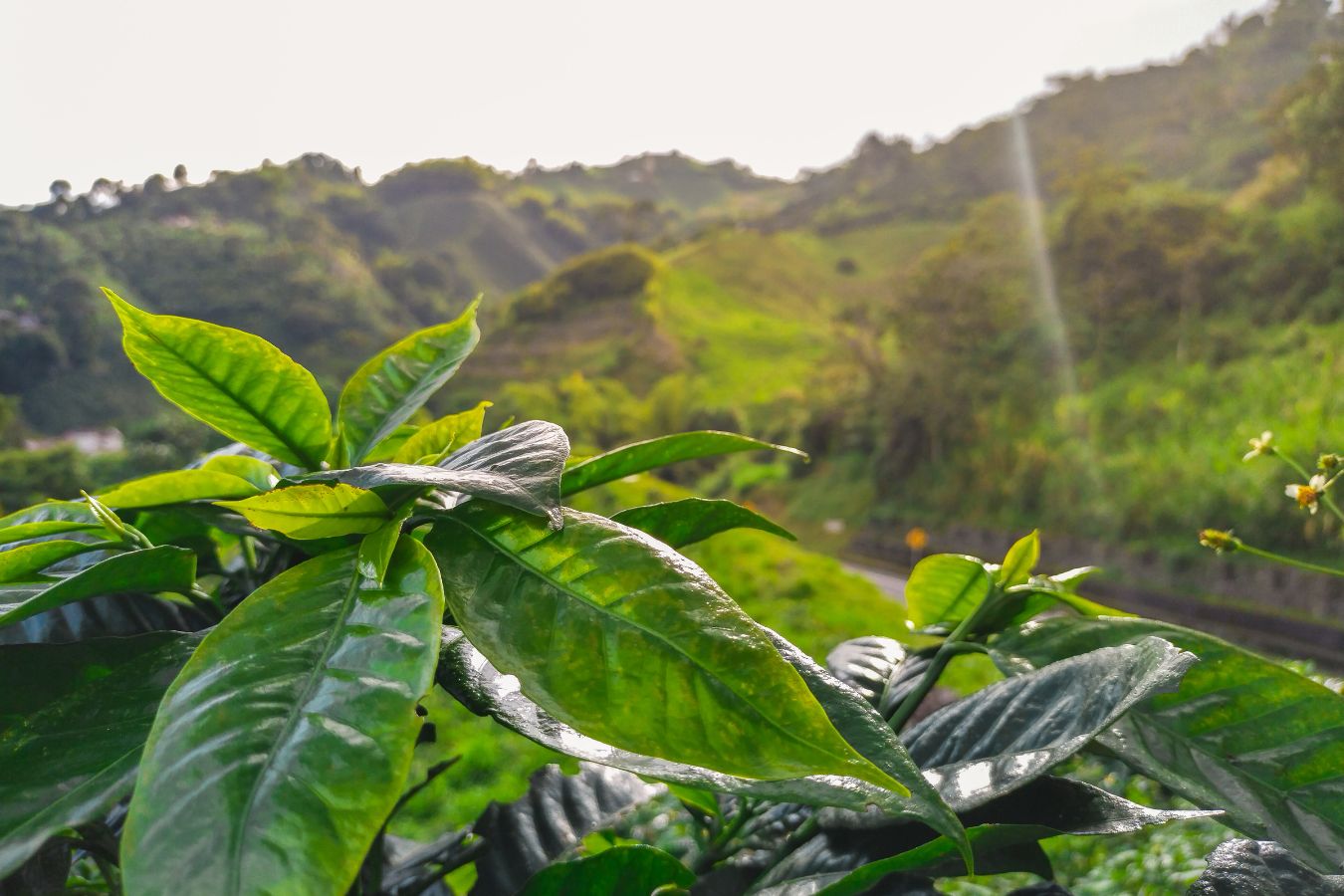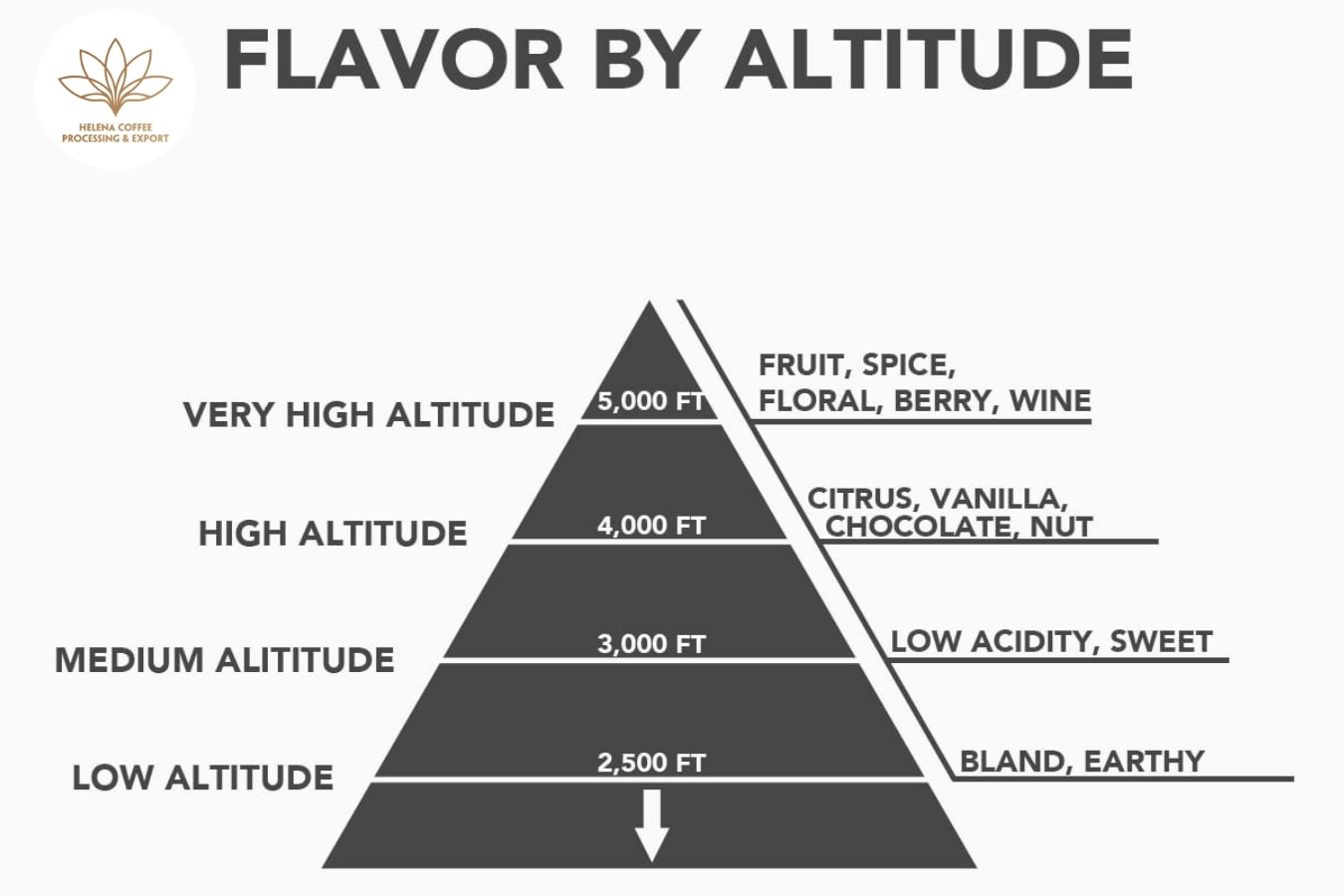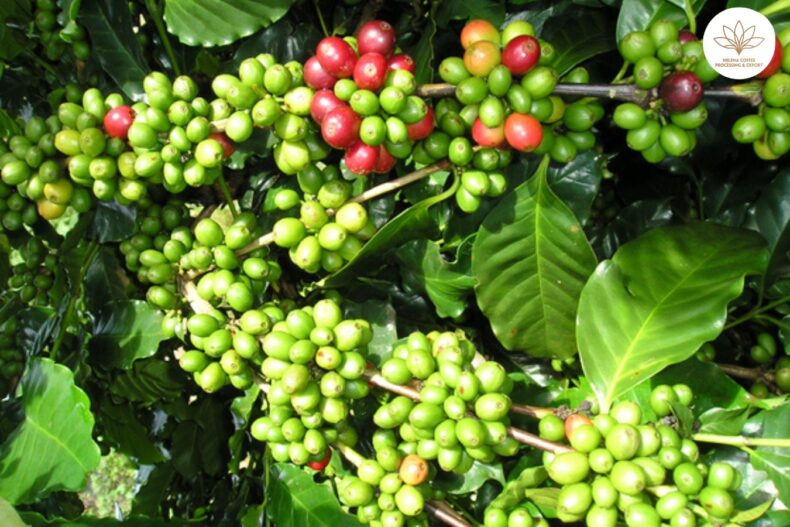
Best High Altitude Coffee: One of the key determinants of coffee production and characteristics is altitude or height above sea level. Coffee is graded according to altitude in El Salvador and Honduras because higher altitudes often produce high-quality beans with diverse flavours. How about the best high-altitude coffee?
How high altitude affects coffee?
Quality and flavour of beans
Water and temperature largely determine the flavour and quality, and the colder climatic conditions typical at high altitudes produce great-tasting coffees. For instance, on average, some most flavorful Arabica coffee varieties are grown between 16-23 degrees Celsius.
The cooler temperatures at high altitudes allow for slower maturation of the plant and beans, gradually ripening the fruit cherry. The resulting beans are dense (hard) and contain increased sugars. The extra time allows for complex flavours and acidity to develop.

Soils in higher elevations also are primarily well-drained, yielding beans with less water and intense flavours from the sugars. Therefore, well-cared-for coffee produced in high elevation will deliver a more acidic, aromatic, and flavorful cup that we all love!
Coffee crops are also less susceptible to pests and diseases at high altitudes. For example, the Coffee Berry Borer (CBB) pest, currently widespread in almost all coffee-producing countries, causes severe losses in yield and quality, especially at low altitudes.
However, recent studies have established that damage by the pest is rarely severe at altitudes above 1370 meters ( ̴ 4500 ft) and is absent above 1680 meters ( ̴ 5500 ft) above sea level.
Altitudes considered high
It is considered a high-elevation country when the altitude is 4000 feet ( ̴1200 meters), and any coffee produced in these conditions is dense and desirable. However, some countries, such as Ethiopia, make coffee at elevations as high as 6000 feet ( ̴1800 meters ), while 3000 feet ( ̴ 900 meters) is considered high in Central America.
Any coffee grown above 4000 feet will be dense, and some regions and countries identify these high-grown lots in technical terms. For example, the coffee produced above 3000 feet in Central America is known as ‘hard’ and selections growing above 4500 feet as ‘strictly hard’ beans.
Papua New Guinea designates coffee from its highest farms as ‘Mile High,’ while Mexico, on the other side of the world, terms it ‘Altura’.
What altitude should you look for when picking coffee?
Different heights yield coffee of varying flavours; therefore, personal preferences will determine the kind of coffee you choose. For instance, beans tend to be more acidic and translate to fruity and floral flavours in the cup when grown at high altitudes above 1300 meters (4500 ft).

The following is an indication of the level of elevation and the taste of the coffee it produces:
- 5000 ft /1500 m and above – the coffee in these conditions has Complex, Floral, Fruity, Acidic, and Spicy flavours. Coffee from Colombia, Ethiopia, Kenya, Guatemala, Papua New Guinea, and Sulawesi are famous for these flavour profiles.
- 4000 ft /1200 m – the coffee has Nutty, Vanilla, Cocoa, Citrus, and Earthy tasting notes. Countries like Costa Rica, Java, Sumatra, Nicaragua, and Mexico Altura produce coffee with these notes.
- 3000 ft /900 m – coffees from this altitude are usually Sweet and Smooth common to coffees from Brazil, Bouma, and Santos.
- 2500 ft /700 m – the coffee is Mild, Soft, and Simple. A classic example of this is the Hawaiian Kona coffee.
- 2000 ft /600 m and below: coffees from very low elevations are typically plain and bland
High-altitude coffee countries in the world
Ethiopia
(Coffee elevation range: 3600 – 7200 ft ( ̴ 1100 – 2200 m). Highest mountain elevation: 14,872 ft ( ̴ 4500 m)
Ethiopia is an African country located above the equator. It has an altitude that ranges between 4232 and 14,842 feet. On the plateaus, the highest elevation is 9843, which is exceptionally high. Therefore, Ethiopia’s quality of Arabica coffee is high, and the altitude, especially at the great rift, ensures that the coffee quality stands out.
Ethiopia is the top producer of coffee in Africa and the fifth worldwide. It produces 441,000 tons, around 4 per cent of the total coffee consumed worldwide. The producing areas are the western sides of Ethiopia and the central region of Addis Ababa, the capital city.
Colombia
(Coffee elevation range: 2600 – 6200 ft. Highest mountain elevation: 18,946 ft)
Colombia has an elevation of 8284 feet and allows for the growth of various crops. Among them is coffee which maintains high quality and is very reliable in the country’s economy. Moreover, the altitude is good as it ensures that the quality of coffee from Colombia is outstanding in terms of flavour.
It is the third-highest coffee producer and accounts for 8% of the coffee in the world markets. Many people understand Colombian coffee well because of its outstanding flavour and quality. You need to know that Colombia is the world’s second-largest Arabica coffee producer.
Honduras
(Coffee elevation range: 3,600 – 5,249 ft. Highest mountain elevation: 9, 416 ft)
Honduras holds the 6th position after Ethiopia in the production of high-quality coffee. It ranks 5th globally and is the largest producer in Central America. Honduras supplies about 3.6 % of the world market with Arabica coffee due to its favourable climates. Areas around the west of the country are the greatest producers of coffee.
The highest altitude in Honduras is 9416 feet above sea level, making it ideal for growing coffee. Areas that grow coffee in Honduras boast of producing the best coffee quality because the slow maturation process of the crops allows the development of desirable bean flavour and density.
Uganda
(Coffee elevation range: 2,625 – 7,218 ft. Highest mountain elevation: 16,762 ft)
The highest point in Uganda is 16,762 ft which is too high to produce coffee. However, the country grows Arabica and Robusta coffee which is indigenous to Uganda. The two main Robusta varieties – Nerecta and Nganda – are grown at 2,625 – 4,593 ft. It accounts for 82% of Uganda’s total coffee production, especially for its suitability for the growing instant coffee industry. It mainly grows in the Lake Victoria basin to the southern region bordering Kenya, Congo, and Rwanda the Arabica coffee. On the other hand, Arabica is produced at 4265 -7200 ft and accounts for the remaining 18 %. Uganda accounts for 2.4% of the total world supply.
Guatemala
(Coffee elevation range: 3900 – 6200 ft. Highest mountain elevation: 13,845 ft)
Guatemala scoops the 10th position in supplying coffee to the world market with 216 000 metric tons per year. It produces Arabica coffee which covers up to 97% leaving the 3% for Robusta coffee. The country, also known for its high-quality coffee, delivers 2% to the whole world market.
Coffee is grown in the southern parts of Guatemala, which has a high altitude. Its highest point has an elevation of 13,845 feet, and the lowest point is at the ocean. Most of the areas lie about 5000 ft which only favours high-quality coffee!
Costa Rica
(Coffee elevation range: 2600 – 6500 ft. Highest mountain elevation: 12,532 ft)
Costa Rica is another famous country that supplies 0.88% of the global market with Arabica coffee. The coffee from Costa Rica has the best quality and flavour because of the high altitude. However, it does not produce Robusta coffee as the quality of Arabica is perfectly maintained.
The highest peaks are around 12 542 ft which is too high for coffee production. Even so, the higher elevations -particularly between 3900 and 5,600 ft (1200 and 1,700 m)- have climates that are nicely suited to the needs of coffee plants. As a result, the coffee from Costa Rica receives high ranks in the markets.
Kenya
(Coffee elevation range: 4,593 – 6,562 ft. Highest mountain elevation: 17,051 ft)
Kenya produces the coffee that many drinkers deliberately love. It is valued for the complexity of its flavours, unlike any other in the world. Most coffee is grown at altitudes ranging from 4,593 to 6,562 ft on the high plateaus surrounding the snow-capped Mt. Kenya and the foothills of the Aberdare Ranges.
The central coffee-growing region spans towards the capital, Nairobi, from the 17000-foot Mt Kenya, while a smaller area lies on the hills of Mount Elgon near the border with Uganda. These areas are mountainous, and the high-altitude yields beans with desirable and prized attributes.
But unfortunately, Kenya’s coffee production has significantly declined to about 39000 metric tons annually, accounting for just 0.04% of the world’s coffee.


